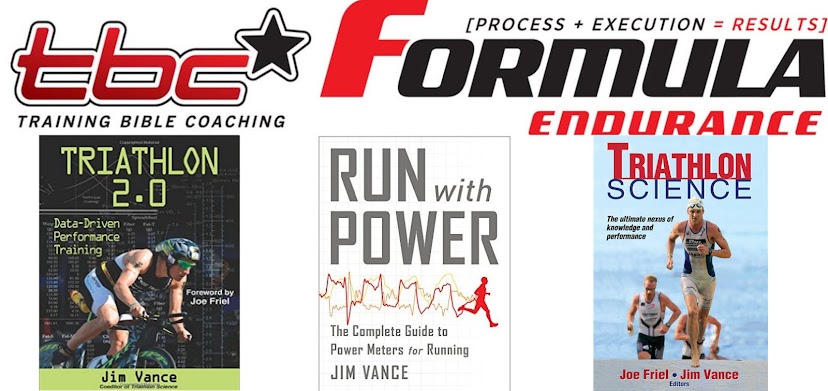This past Saturday was the California 70.3 Oceanside race. I had one athlete who came to me this year, Adam Zucco, who performed exceptionally well, winning the Men's 30-34 age group. He has been wanting to improve his run, which we have focused on and resulted in a 1:25 off the bike, a 2+ minute PR.
Adam claimed to have tried the traditional taper many times, yet always seemed to perform poorly. Luckily, he had been collecting his data from power meters and a GPS for his running, so we were able to go back and see how his tapers in the past were conducted, and see if what he said was truly accurate. His assessments on his performances from traditional tapers were fairly accurate. (This is yet another huge advantage of using "gadgets" in training and coaching, but that's an older post).
I have been working on a big change of focus for Adam's training. Because he's been an Ironman guy for so long, he needed to change to more and higher intensity in his training. Knowing this change, and tracking his improvement in his running and cycling from it, I didn't necessarily think his past taper issues would still be a problem with the change of emphasis in his new training, but sending him to the start line with the same old taper he has had in the past would have probably hurt his confidence in both me and his race readiness. Instead, I came up with a different taper strategy to prepare him, and we discussed it. We both agreed it would be a gamble, but the fact we agreed in the principles of the taper, meant he would at least be fairly confident in it. (Never underestimate the effect of the mind on performance!)
If you look at the standard taper found in most plans, and with most athletes' training, it's a regressive and steady decline in volume and intensity. Or another way of putting it is to say it's steady and progressive with rest and recovery. Adam claimed this rest made him feel flat, which is common, but he was never able to perform near his potential despite these flat feelings.
The basic idea of a taper is to remove fatigue from the body, while trying to maintain as high a fitness level as possible, and allow the body to perform well. When you remove fatigue, you lose some fitness, and most people have trouble understanding that. Without fatigue, there can't be fitness gains. So too much rest, and the athlete loses too much fitness to perform to their potential.
Oceanside was a B priority race, but it was the first of the year, and the opportunity to get to Kona made it more like an A-/B+ race. This meant we wouldn't do a complete taper for a peak race, but certainly wouldn't train thru the race.
So my dilemma with Adam was trying to find a way to remove fatigue, but not via the traditional means. Adam has traditionally been very resilient, with impressive ability to recover from hard efforts rather quickly, so this was something I needed to use to his advantage. He was coming off a big training camp in Tucson, 3 weeks out from the race, and when he got back to Chicago, he would have to meet his work and family obligations, so training would be lower in volume.
Normally I find 2 days of light activity are sufficient for getting athletes recovered and ready to perform well. 3 days with the third day out having some small amount of intensity works even better. So we decided we would do 1.5 weeks of normal taper style of reducing volume, maintaining intensity, followed by 2 blocks of 3 days light, (a little intensity on that 3rd day out), with a 3 day block of intensity in the middle of them.
The plan was to reduce fatigue with the light days, then keep sharpness with a short 3 day block, then remove the fatigue again.

(Click on photo to enlarge)
This photo shows how the taper looked in the WKO+ Performance Management Chart was not steady and smooth in its decline of fatigue, but rather staircased and jagged, but still holding fitness. His CTL went from 117 to 110, so only a 6% decline in fitness, where up to 10% is considered acceptable.
On Tuesday, when we did a controlled, triple-brick interval workout, Adam was doubting the strategy a bit. On Saturday, for the final mile of the race, he was celebrating his first major win and a Kona slot!
Would he have performed better with the traditional taper? We'll never know, but I think he is happy with the result.
This is what I love about coaching, and what a coach is supposed to do. I would not conduct this taper strategy with every athlete, because each athlete is different. The job of a coach is to learn all they can about each athlete and choose strategies which will benefit them, and are specific to them. I was pleased to accomplish that with Adam at Oceanside.






